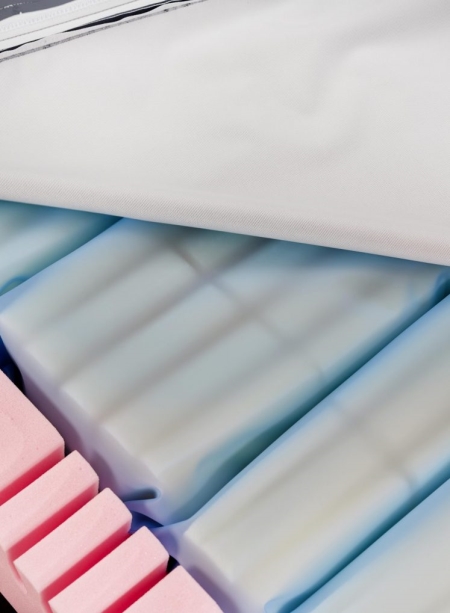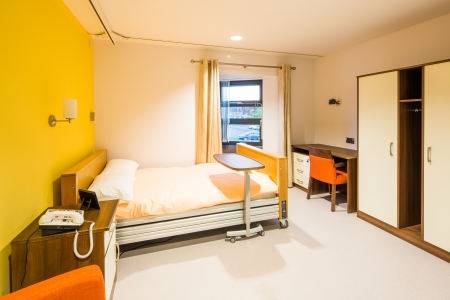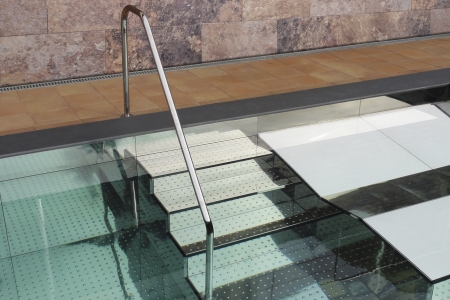Joseph Hulbert, healthcare consultant at Innova Care Concepts, works with hospices and hospitals to ensure they are using the most up-to-date, effective, clean equipment available. In this article, he writes about how hospitals can tackle infection control issues and the solutions that are available
Regulating and minimising the spread of bacteria within multi-user environments is a challenge, but it is most certainly one worth pursuing.
With budget cut after budget cut coming from the Government, and increased life expectancy, hospital workers are under tremendous pressure to provide excellent care while preventing the spread of infection
According to the National Institute for Health and Care Excellence (NICE), there is a 6.4% chance of getting an infection while in hospital in England. This equates to around 300,000 people a year becoming more ill while under NHS care due to substandard infection control standards. And this costs the NHS about £1billion a year.
That being said, NHS workers are also more stretched than ever before.
With budget cut after budget cut coming from the Government, and increased life expectancy, hospital workers are under tremendous pressure to provide excellent care while preventing the spread of infection, amongst a wealth of other duties they undertake in their roles.
However, we can combat this problem with a simple solution; design.
It is up to patient care equipment manufacturers like ourselves to ensure that what we are providing is good for minimising the spread of bacteria
It is up to patient care equipment manufacturers like ourselves to ensure that what we are providing is good for minimising the spread of bacteria.
A Design Council case study from 2008 found that levels of cross infection dropped when equipment had been specifically designed and manufactured to be easy to clean.
We need to step forward and ensure that our equipment is created with the practicalities of infection control in mind.
There are a few ways to do this.
Using specialised antimicrobial materials in healthcare equipment is now a must. This will help to prevent bacteria from festering on things like mattresses and chairs, and therefore reduce the risk of equipment carrying infectious micro-organisms.
Bed-bound patients will be more at risk of developing infections as their immune system may have weakened significantly, and it is easier for bacteria to grow in a foam mattress.
A Design Council case study from 2008 found that levels of cross infection dropped when equipment had been specifically designed and manufactured to be easy to clean
Some pressure care mattresses feature waterproof interliners, which completely seal off the foam for infection control and cleanliness.
The equipment we provide should also minimise areas where bacteria can grow.
Traditionally sewn seams are a great spot for infections to harbour; the stitches themselves and the holes they create in the fabric are ideal for bacteria because they are incredibly difficult to clean.
This is precisely why we suggest using ultrasonic welded seams. From hospital gowns to mattress covers, welded seams provide a strong bond between different materials to ensure that they are attached just as strongly as they would be with traditional stitching.
However, sonic welding leaves no holes in the fabric and uses no stitching, making it all the more difficult for equipment to become contaminated.

Mattresses with waterproof interliners seal off the foam for infection control and cleanliness
Ceiling hoist tracking might also be something to think about with infection control.
If it is not cleaned on a regular basis, ceiling track can get particularly dusty and dirty. Yet, innovative design has overcome this problem as well.
Inset tracking is installed into the ceiling itself, leaving no room for bacteria and infections to settle on a suspended rail. This significantly reduces the risk of contamination, and it does not need cleaning as often.

Inset tracking for curtains helps to prevent the spread of infection in healthcare environments
Using specialised antimicrobial materials in healthcare equipment is now a must. This will help to prevent bacteria from festering on things like mattresses and chairs, and therefore reduce the risk of equipment carrying infectious micro-organisms
There is also the option to use high-pressure laminate (HPL) in hidden hoist systems, making them much easier to clean and a lot subtler than a standard hoist.
Tiled hydrotherapy pools can be a magnet for microorganisms. Infections can take hold of the grouted gaps between tiles, which is difficult and expensive to clean.
The solution to this is to change what the pool is made from. Stainless steel is a robust, easily-cleaned material that boasts excellent strength and sterility.
Built using mechanical anchorages and cold welding, these pools have no perforations, which successfully reduces the chance of any degradation or microorganism growth.
Not only is it cheaper to build, install, and maintain, it also makes the pool look incredible.
We see the prominence of infection control everyday within the healthcare sector, and taking steps to ensure good hygiene levels will help to save money in the long-term and provide a better standard of care for patients.
We see the prominence of infection control everyday within the healthcare sector, and taking steps to ensure good hygiene levels will help to save money in the long-term and provide a better standard of care for patients
While we continue our endeavours to make patient care equipment as user-friendly as possible, we will also take measures to make sure that it does not pose a threat in the efforts to combat infection and contamination.
From mattress covers and linings, through to hoist tracking and hydrotherapy pools, the solutions are there for the taking.

Hydrotherapy pools can be a magnet for micro-organisms, but making them from stainless steel can prevent this




